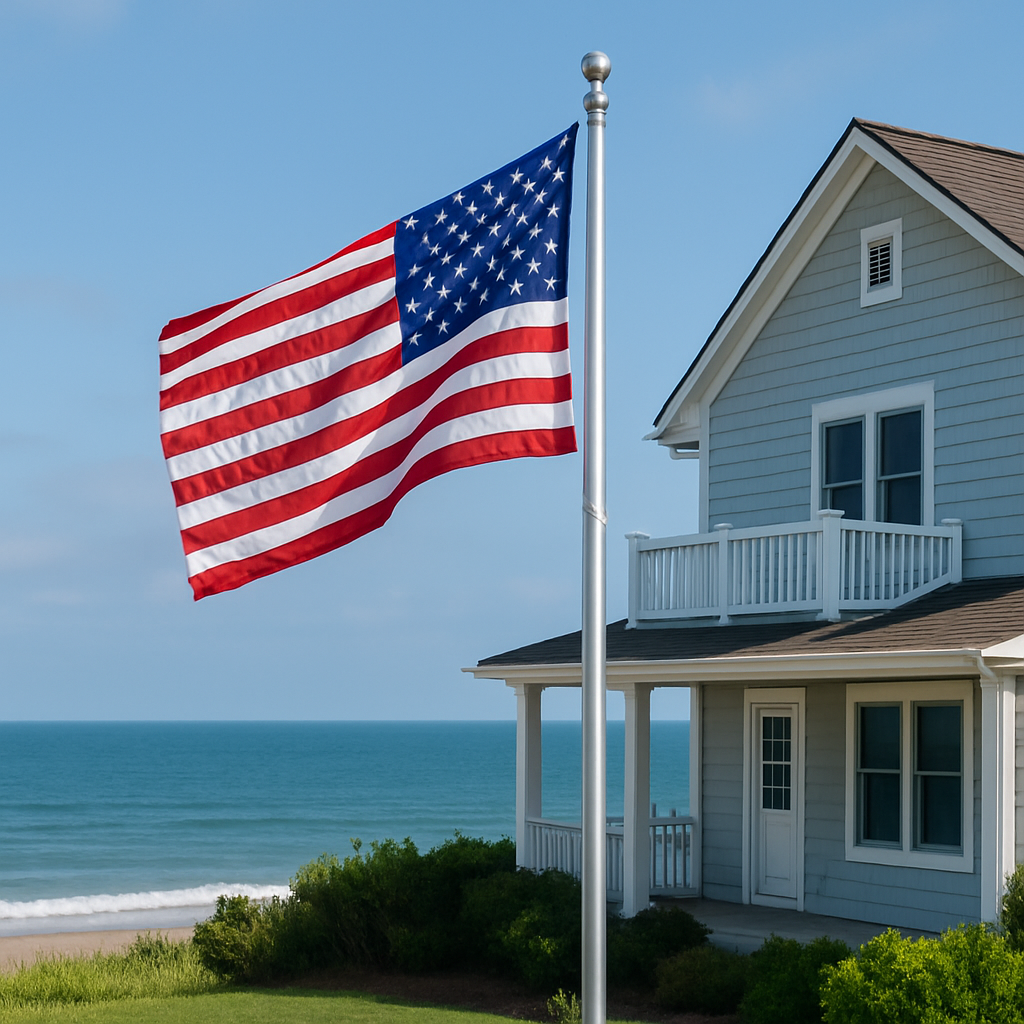
· By Drew Whitmore
Best Flagpole Materials for Coastal Homes
Choosing the Best Flagpole Materials for Coastal Environments
Living near the coast means you enjoy fresh breezes, salt air, and stunning views—but it also means your flagpole needs to stand up to some of the harshest elements nature can deliver.
If you're flying the American flag by the ocean, your flagpole must offer more than just good looks. It must resist corrosion, endure high winds, and maintain its integrity year-round.
Our 24ft aluminum flagpole kit is specifically engineered to withstand tough coastal weather, offering both durability and a proud, lasting display.
Here’s what to know before selecting the right material for your coastal home.
Why Coastal Climates Demand the Right Flagpole Material
Saltwater corrosion is no joke. It wears down metal quickly, especially when mixed with heavy winds and humidity.
That’s why choosing the proper flagpole material matters more than aesthetics alone.
A wrong choice can lead to rust, fading, or structural damage—problems that often surface within a year if not planned for.
For homeowners serious about their display, reviewing the full history of American flagpoles gives helpful context for why certain materials have proven to last through the decades.
Ensures you’re not just buying a product—you’re investing in craftsmanship designed for American conditions.
Best Materials for Salt-Rich Air and High Wind
Aluminum remains the most recommended material for coastal homes due to its corrosion resistance, low maintenance, and lightweight strength.
It's built for windy environments and stands firm in rain, sun, or snow.
Aluminum is also the top choice for those who want to light their flagpole properly at night without the risk of structural damage over time.
While steel poles are stronger, they require constant maintenance and specialized coatings to resist rust.
Fiberglass offers good resistance to salt, but it’s prone to color fading and doesn't always hold up in high wind as well as aluminum.
How Flag Etiquette Affects Material Choice
Proper material selection isn’t just about performance—it ties directly to respect.
The U.S. Flag Code guides how the flag should be displayed, and understanding proper flag etiquette includes ensuring your flag remains upright, untattered, and well-lit.
Aluminum’s durability ensures your setup remains compliant without constant repairs.
Planning for Night Displays and Windy Days
Coastal areas often come with longer daylight and strong gusts, so you’ll need a pole that can handle both.
If you plan to fly your flag at night, aluminum poles easily support solar or wired flagpole lights without stress.
This helps you stay within flag code and avoid the common error of flying a flag at night without a light, which is against U.S. regulations.
Before committing, take time to understand whether your location has flagpole permit requirements, especially in scenic coastal zones or HOA-regulated communities.
Compliance matters not just for legality, but to ensure you don’t have to take your pole down later.

Why Durability Matters More Near the Ocean
Even the best materials need proper care.
If you’re installing a flagpole for the first time, we recommend reviewing how to properly fold an American flag and store it during hurricanes or extended storms.
This small habit extends the life of your flag and shows the respect it deserves.
Choosing the right pole is as much about avoiding future issues as it is about celebrating freedom.
Be sure to review a full flagpole buying guide so you don’t overlook key elements like mounting, wind ratings, and finish types.

Related Posts
